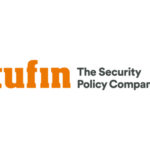When an internal user or external customer launches an application or requests data on your network, they almost always see that application or get that data. What they don’t see is the complex web of rules that govern your network traffic and infrastructure.
As network topologies have become more diverse—combining on-premises infrastructure, cloud, and edge devices—managing the rules that govern network traffic and security has also become more complex.
Without automation, for every rule change, a human being would need to review and approve rule changes. Depending on the size of the organization, there might be dozens if not hundreds of rule change requests per day that traverse a wide array of network technologies and vendors, adding to the complexity of managing the network.
Increasingly, network administrators and staff need to take more time to track, oversee, and implement network rule changes and rule recertifications.
The Value of Automation in Change Management
At Tufin, we believe automation is the key to saving organizations time and money on rule management and recertification. Without automation, such reviews are time-consuming and tedious, and can lead to errors that could have cascading negative consequences for your network and users. For example, an error introduced in a rule change could lead to:
-
Validated users not being able to access the applications or data they need
-
Vulnerabilities being introduced into network architecture
-
Users being given access to applications or communications channels they should not have access to
With the Tufin Orchestration Suite (TOS), you gain access to a centralized security management console that lets you define and implement a comprehensive network security policy.
Organizations can rapidly automate network changes while remaining compliant to that policy. This saves time and ensures that network rule changes and recertifications keep the organization in compliance with regulatory policies and ready for any audits.
How Tufin Automates Network Change Management
TOS provides a comprehensive view of all of your network rules, governing everything about which users can access which data, how users communicate, security protocols, and more. Some examples of this include:
-
See which rules require cleanup, which are disabled, and which are duplicated. If the right rules are not in place, or if rules are disabled or duplicated, it could mean your network is vulnerable to a breach.
-
Automate workflows that review and make network rules changes, and then push those updated rules automatically to firewalls or other network devices with a single click. A 2023 Forrester Consulting Total Economic Impact (TEI) study found that Tufin customers saw a 94% reduction in the effort needed to analyze and implement network changes.
-
Identify expiring or expired rules, eliminating many of the manual steps normally required.
How Tufin Helps Automate and Streamline Compliance and Audits
With TOS, you can also automate and simplify your compliance processes, set up audit trails, and have rules recertified. You will be able to gain many benefits, including the following:
-
See which rules are mandated to maintain compliances with regulations like Payment Card Industry Data Security Standard (PCI DSS) and the Health Insurance Portability and Accountability Act (HIPAA).
-
Detect rule violations of compliance mandates, necessitating changes to avoid noncompliance penalties or audit flags.
-
Customize the rule review process, identify inactive rule owners for reassignment, and orchestrate rule reviews across owners.
-
Automate the rule recertification processes across owners, networks, administrators, and devices, ensuring documentation for audit and compliance purposes.
-
Automate the detection of expiring or expired rules and recertify and decertify as needed.
At any point in these workflows, network admins can step in to review whether rules should be changed the target devices of the rule change, whether the rule change poses a security risk, and how it will affect compliance statuses. However, the key is that these steps can also be easily streamlined, automated, and implemented across your network at the touch of a button.
The Benefits of Automating Network Change Management Processes with Tufin
There are numerous advantages to automating network rule change management and recertification.
The benefits include:
-
Network changes can be analyzed and implemented faster
-
Security policies can be applied consistently across network environments
-
Audit, compliance, and reporting requests are more easily met
-
Reduced risk of security breaches and noncompliance
As network topologies become more complex, the benefits increase significantly, as no organization has the time or staffing to scale up all this change management manually.
Rule review has historically required significant coordination across various teams: those responsible for provisioning and managing rules; security teams; those who understand if the rules are needed and who must approve changes; and those responsible for managing rules changes for when personnel leave the organization.
Conclusion
Tufin takes the complexity out of network change management and rule recertification, allowing you to focus on your organization’s top priorities.
It also reduces the possibility that human error during rule configurations could introduce unintended negative consequences for security and compliance.
With automation, those requests can be dealt with dramatically faster, freeing up staff to work on more strategic initiatives instead of reviewing spreadsheets of rules and tickets.
Efficient change management unifies the change management process across multiple teams. This will improve collaboration among network, security and compliance teams and break down silos in your organization.
All of this also saves your organization significant amounts of money. For example, the Forrester TEI study found that the ability to automatically generate security attestation and other requested documentation eliminates the need to manually collect information and organize reports for auditors or other parties, saving time for the network security team.
Over three years, the labor cost savings are worth $5 million and there is a 144% return on investment, according to the report.
- Home
- Blog
- Network Security Automation
- How to Streamline the Change Management Process with Tufin










